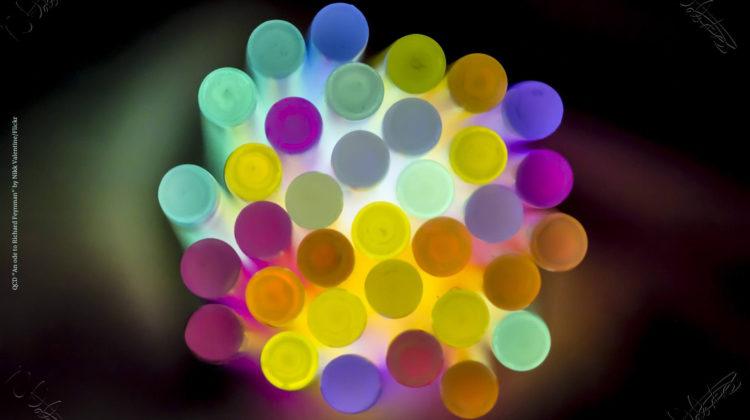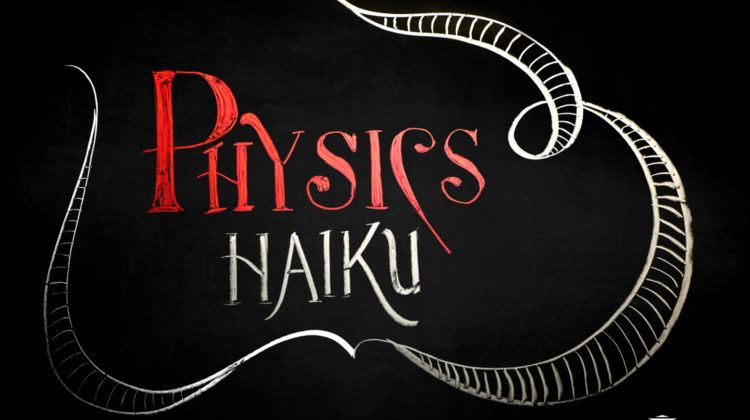Pushing past a breaking point
New observable identified by Perimeter researchers provides alternate route to probe certain quantum gauge theories.
Every tool has its boundary. A measuring tape is plenty useful, until you want to work out the distance between atoms, or between the sun and the moon.
When you hit such a boundary, you have to reach for a new tool. But what do you do if there’s nothing to reach for?
For years, that has been a quandary for quantum field theorists. One of their most ubiquitous tools – Wilson loop operators – is excellent for formulating, and extracting physical information from, gauge theories.
But there is a hitch: at sufficiently low energies, Wilson loop operators can break down and stop providing a reliable description of what is happening in the theory. The tool hits its boundary. The theory, in effect, is at the end of the road.
Deep inside the atom, the quarks that make up protons and neutrons are ‘confined,’ or bound so tightly by the strong nuclear force that they are never found in isolation.
The theory of strong nuclear force – called “quantum chromodynamics” – has been well tested in certain regimes. Observables like Wilson loops are key to this effort, as they equip theorists to probe the subatomic world and extract information.
Gauge theories and Wilson loop operators also play a central role in quantum many-body physics: they capture the properties of various states of matter. But again, the Wilson loop description typically breaks down in the low-energy regime.
When a tool stops working, that flow of information dries up. Finding new observables that function past that blockage can open up whole new areas of discovery.
For years, theorists have searched for an alternate, or “dual description,” of a Wilson loop that can remain effective past that observable’s boundary.
Now, Perimeter Institute researcher Jaume Gomis and his former student, Benjamin Assel, currently at CERN, have identified another observable in gauge theories in three dimensions that may push past the Wilson loops’ breaking point and extract new information from previously impenetrable theories.
Gomis and Assel found that a type of operator called a vortex loop can act as a dual, for Wilson loops, with the bonus that they can still provide answers at the low energies where Wilson loops break down.
These operators can act like a translation dictionary providing two different ways to describe the same system.
In the paper “Mirror Symmetry and Loop Operators,” Gomis and Assel not only put forward the dual relationship, they also provide exact computations to demonstrate their proposal.
Wilson loop operators are a building block of quantum gauge theories. As a fundamental variable, any operator or observable in a gauge theory can be rewritten in terms of Wilson loops. “It might not be pretty, but if you know Wilson loops, you know everything about the theory,” Gomis explains.
But Wilson loop operators are not just a building block for quantum field theory – they also provide a way to measure it. Much like a thermometer will provide information about the heat of a room, operators can make it possible to discern physical phenomena in a theory.
They do this by probing the state of the system as it would be experienced by a heavy particle with electrical charge; Wilson loop operators carry a discrete set of numbers that correspond to that particle’s charge, called its “colour.”
In order to see more deeply into low-energy theories, Gomis and Assel set out to find a dual description of a Wilson loop in gauge theories in three dimensions.
Gomis had a couple of starting points to work with. First, the shape had to match. “You can change the nature of the operator, but not the nature of the geometry of the operator. A loop should map to a loop,” Gomis says.
And he also knew that the dual must also be able to encode the same colour-charge information that Wilson loop operators carry.
The question kept Gomis occupied for more than a decade. He poked away at the challenge while pursuing other projects. Then, two years ago, a hint revealed itself from an unexpected source: string theory.
Gomis had done some work in the mid-2000s using gauge theories to describe Wilson loops in terms of string theory objects called D-branes. That work led to a 2008 paper that introduced the idea of vortex loop operators in the context of holography.
Thanks to that work, Gomis knew that some string theory configurations corresponded to particular gauge theories, and he knew which branes corresponded to Wilson loops. Could the brane realization of Wilson loops provide a pathway to this new dual?
It turned out – after more than two years’ of effort and computation – that it could. The researchers realized Wilson loops in 3D gauge theories using D-branes. On these D-branes, they encoded the Wilson loop charge. They then studied how the rest of the system responded to the presence of the brane under string theory dualities.
“When the theory that lives on this defect couples to the rest of its world, it takes the form of a vortex loop,” Gomis says.
The results revealed that vortex loops are an exact dual for Wilson loops, and can carry data that is essential to the gauge theory, finally giving theorists the tool to move beyond the current stalemate.
“Now, you can try to understand certain condensed matter systems by probing them not with Wilson loops but by studying the physics of these defects, these particular Vortex operators,” Gomis says.
Gomis expects this work to have immediate implications for mathematics; the dual relationship of Wilson loops and vortex loops could provide a new entry into the math of “symplectic duality,” which is the mathematical incarnation of “mirror symmetry,” where the newly found duality between vortex and Wilson loops has been exhibited.
Longer term, he hopes the work can pave the way to further insights, perhaps even helping to develop an alternative formulation for quantum chromodynamics and other gauge theories.
The paper also ends a chapter for Gomis, who is happily setting aside vortex and Wilson loops for a while in order to work on other research projects.
“This question has been an obsession of mine for a long time,” he admits. “It turns out that vortex loops were the correct answer for two questions: one in holography, and the other in this recent work. That shows it is fundamental.
“It’s strange, in a sense, how simple it was.”






















































































